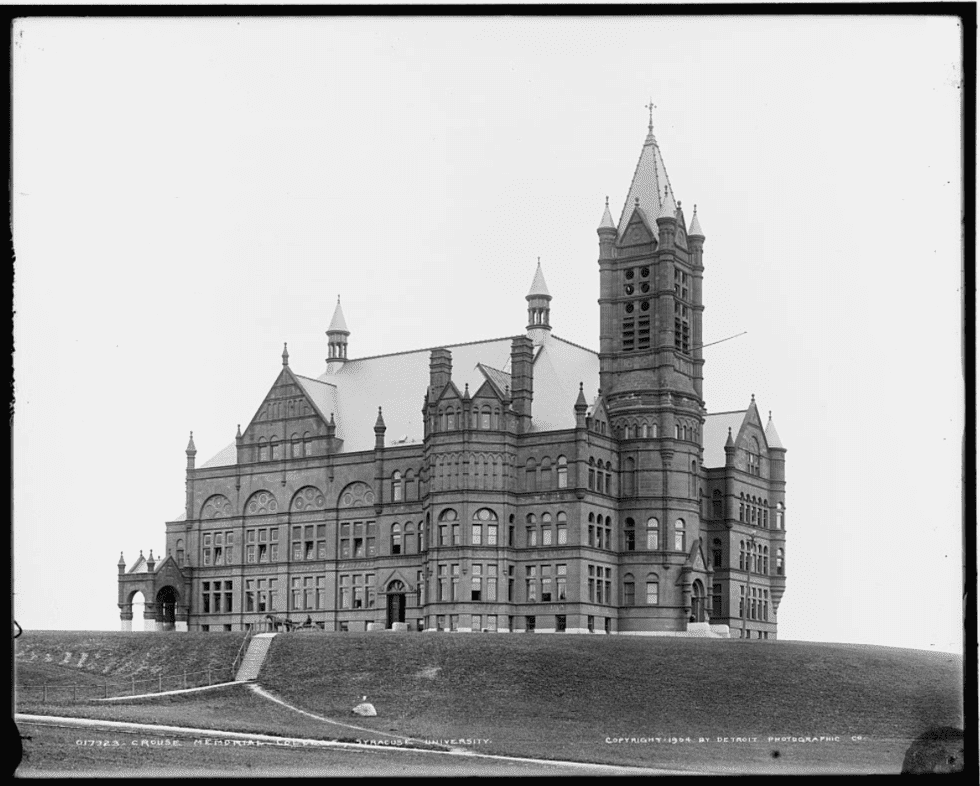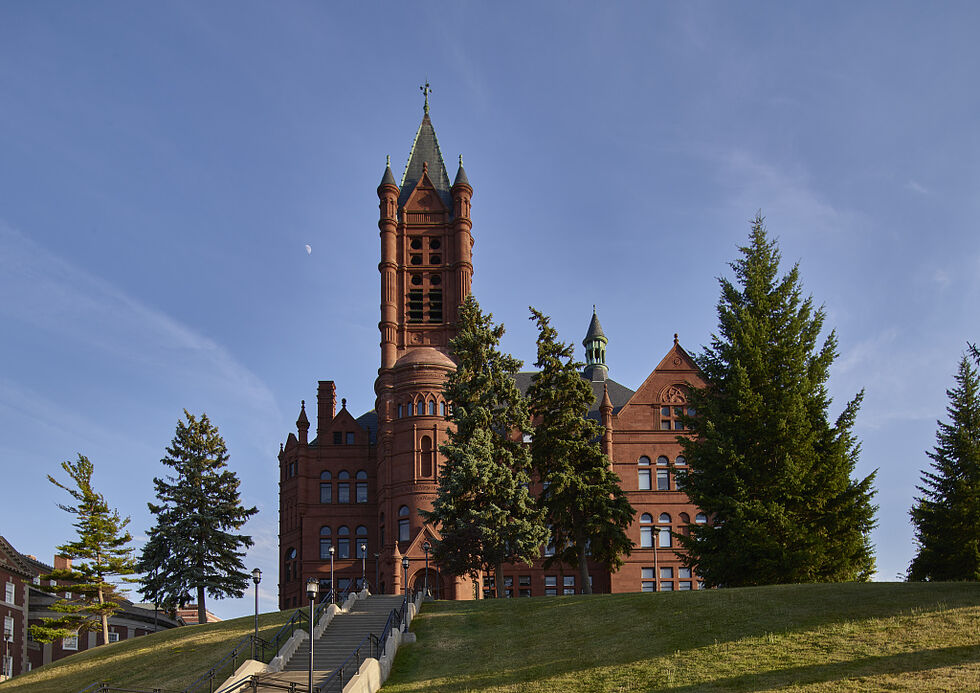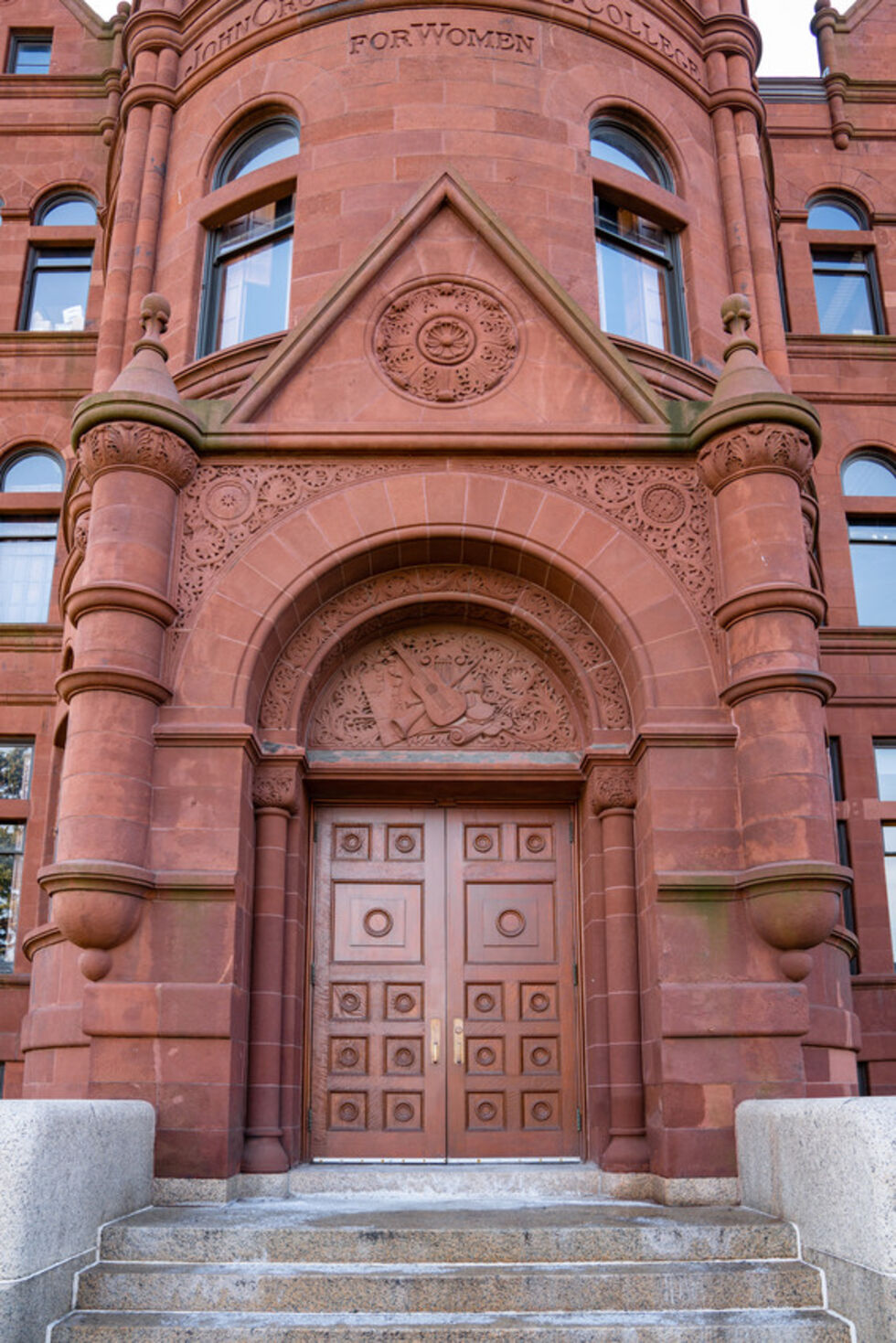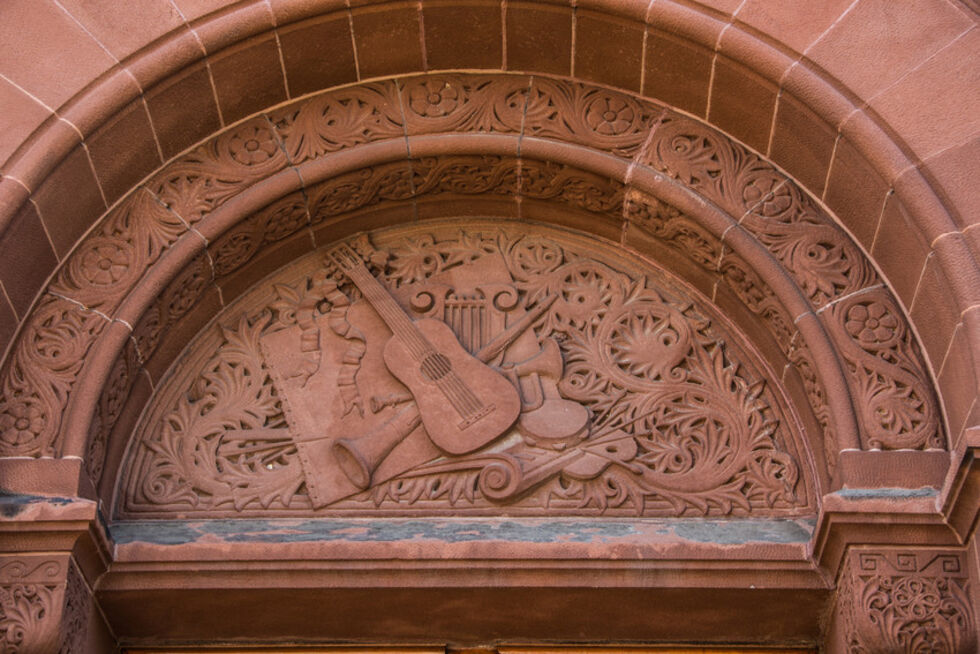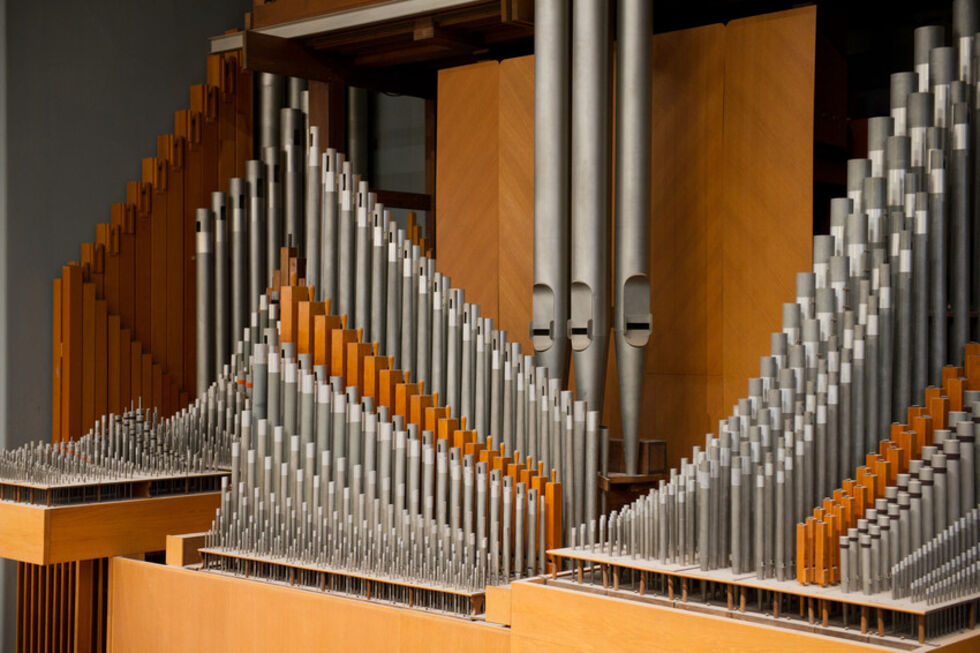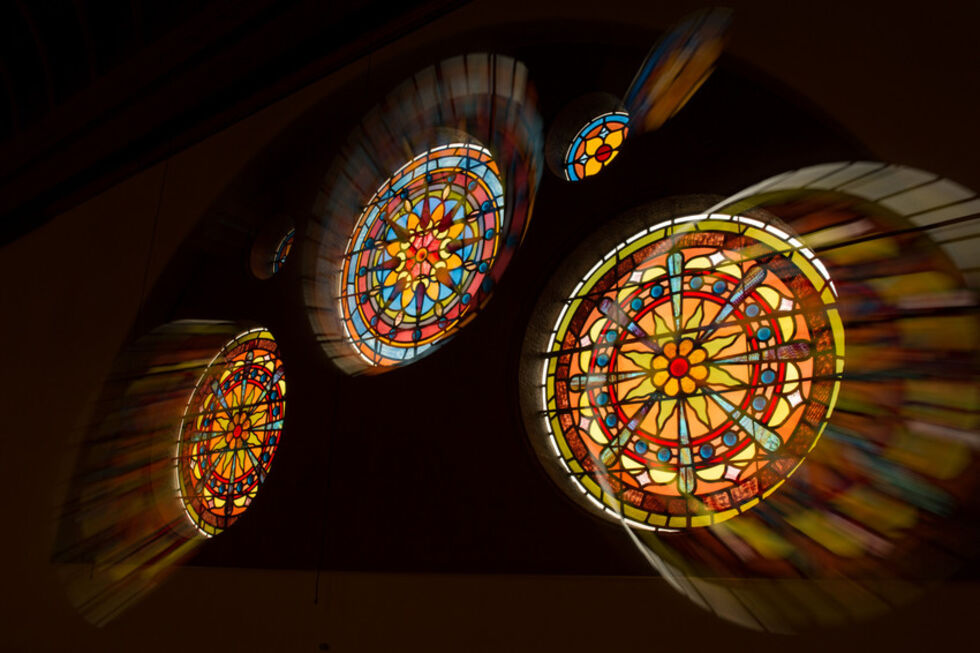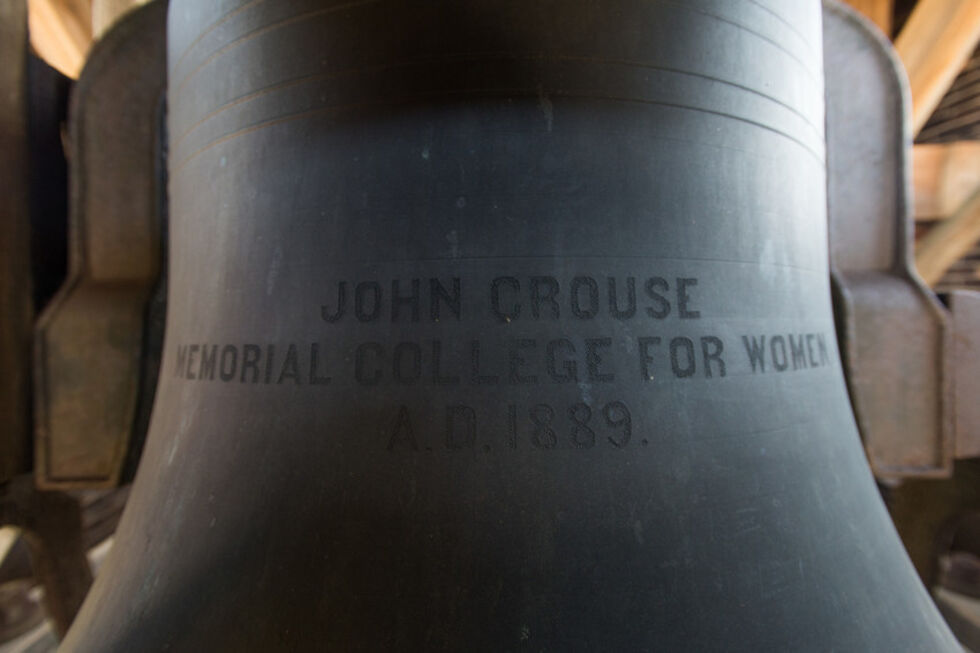Crouse College
"Crouse College of Visual and Performing Arts" by Archimedes Russell , 1888-1889
Crouse College is home to the College of Visual and Performing Arts, including schools and programs in art, design, drama, music, transmedia, as well as communication and rhetorical studies. Crouse College includes The Rose and Jules R. Setnor Auditorium, a 700-seat concert hall that includes an impressive 3,823-pipe Holtkamp Organ below a 70-foot-high open timber roof and stained glass windows. The auditorium serves as the performance space for the Setnor School of Music, but is also used by local community groups. Setnor Auditorium presents more than 200 free concerts a year, including performances by students, faculty, and guest artists. The building’s bell tower remains a symbol of the University and chimes several times daily.
The building was a gift of banker and SU Trustee John R. Crouse to house the growing School of Fine Arts. Originally named the John Crouse College for Women, Crouse’s intention was for the building to foster women’s education. Despite this intention, the building was coeducational from the start. John Crouse claimed that he wanted the building to be “the best in the country...no matter the cost.” With this in mind, he chose to have the building placed on top of the hill on SU campus overlooking Chestnut Street (now Crouse Avenue) and commanding view of the city and surrounding countryside. Crouse explained, “Save this hill for me, and I will put a building on it such as you will never regret having here!”
The exterior of the building included ornate carvings of musical instruments, an artist's palette over the front entrance, four decorative chimneys, a bell tower, and a long staircase leading to the main entrance. Inside the building, a carved wooden staircase lead to a 700-seat auditorium, originally intended as a chapel, with a medieval church motif. The chapel, today known as The Rose and Jules R. Setnor Auditorium, includes a 70-foot high open timber roof and stained-glass windows.
Crouse College’s grandiose style was not without its detractors. The influential critic Montgomery Schulyer criticized the design as a “random aggregation of unstudied form and features” and warned the “course of architecture at Syracuse will fail of its purpose unless it inculcates upon its students the primary necessity of refraining from doing anything like the buildings on campus.”
Born June 4, 1802 in Mindenville, Montgomery County, NY, John R. Crouse was the son of Jacob Crouse and was of German ancestry. John started out as a store clerk but within a few years established a general merchandise business with his brother, Daniel, in Canastota, NY. After 28 years they dissolved their partnership and John made his way to Syracuse. There he founded a wholesale grocery store with his other brother James. John also began working in banking and became one of the first directors of the first National Bank. He married Catherine White on June 16, 1831. She passed in 1885 and John erected the "John Crouse Memorial College for Women" at Syracuse University in her memory. Mr. Crouse was considered one of the richest men in Syracuse. He was one of the largest holders of New York Central & Western Union Telegraph stock. John passed away on June 25, 1889 in Syracuse, NY.
SU University Archives; Gorney, J. (2006). Syracuse University: An Architectural Guide. SU Press; Hardin, E. (1993). Syracuse Landmarks: An AIA Guide to Downtown and Historic Neighborhoods. SU Press; Syracuse Daily Standard. June 26, 1889, page 4; SU Photo and Imaging Center; Library of Congress.
